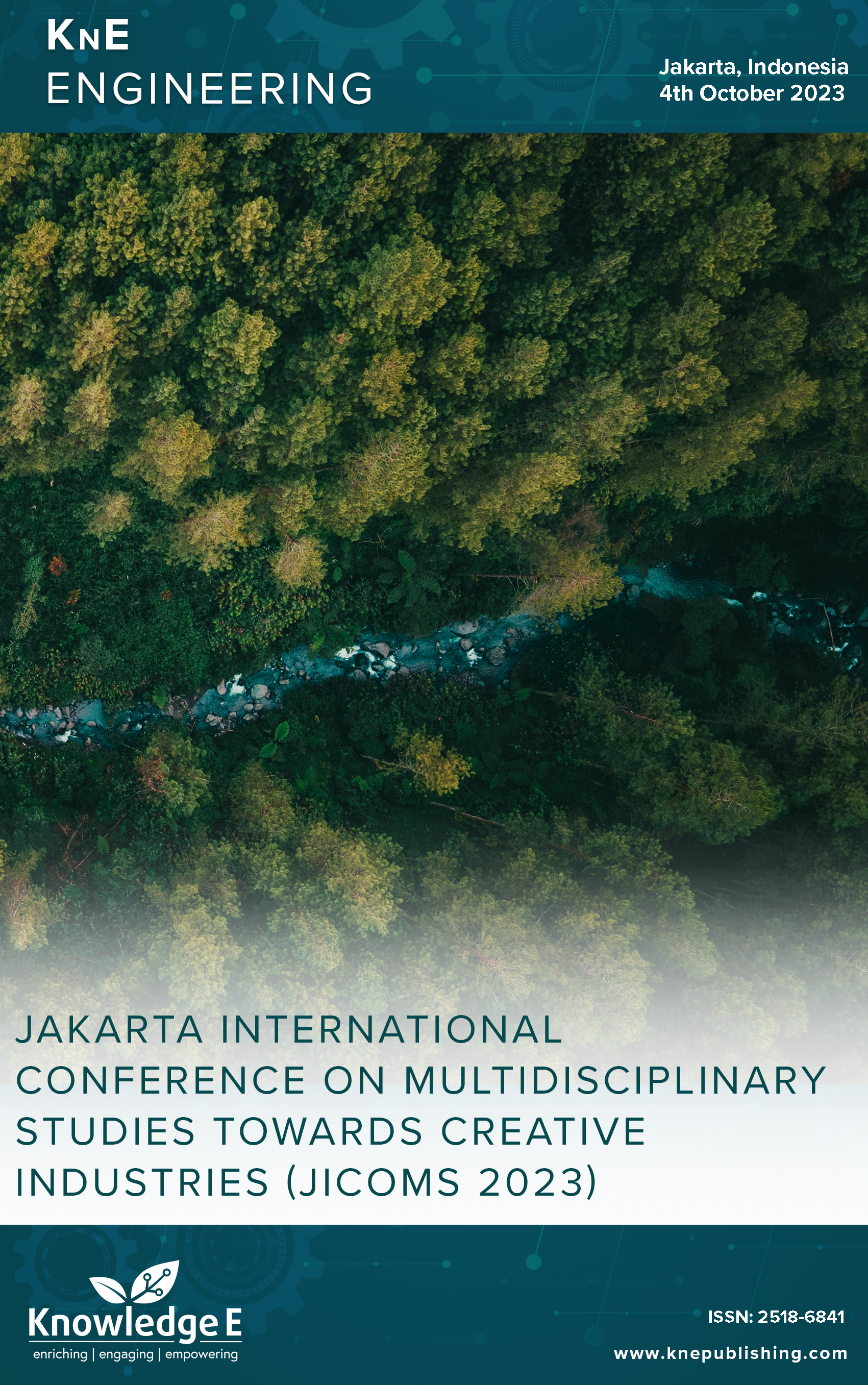Pecipaw (Peci Angpaw): Adding a Wallet in Traditional Peci with Enhancement of Betawi Gigi Balang Ornament
DOI:
https://doi.org/10.18502/keg.v6i1.15421Abstract
This paper sets out the additional value of peci, a hat usually worn by Muslim males in Jakarta during the celebration of Eid al-Fitr, as a symbol of Indonesian cultural identity and modesty. It is common practice for individuals to store money (angpau) in the peci for easy access, however, there is a problem with the existing traditional peci design. Money will scatter when the peci falls off, thus, compromising user comfort and safety. The peci design was explored by introducing an additional wallet feature with a zipper that allows customization and versatility. Additionally, the use of Betawi traditional ornaments further enhances the peci value, making it suitable as an iconic souvenir from Jakarta. This research applied the design thinking approach of the Hasso Platner Institute (HPI) Stanford model with five steps comprised of empathize, define, ideate, prototype, and test as a problem-solving tool to provide a better understanding of the needs and perspectives of peci users. The results show that pecipaw innovation could cater to the added value of traditional peci products as an iconic souvenir of Jakarta. Further research will help to expand more explorative design and conduct user evaluation to establish objective measurements of the final prototype.
Keywords: peci, gigi balang, betawi, ornament, wallet
References
[2] Dunne D. Design thinking at work how innovative organizations are embracing design. Toronto, Buffalo, London: University of Toronto Press; 2018. https://doi.org/10.3138/9781487513788
[3] Dunne D. Implementing design thinking in organizations: An exploratory study. Journal of Organization Design. 2018;7(16):1–6.
[4] Brown T. “Design Thinking,” Harvard Business Review, no. Junie; 2008. pp. 84–92.
[5] Lockwood T, Papke E. NNOVATION BY DESIGN How any organization can leverage design thinking to produce change, drive new ideas, and deliver meaningful solutions. New Jersey: The Career Press; 2018.
[6] Tschimmel K. “Design thinking as an effective toolkit for innovation,” in Proceedings of the XXIII ISPIM Conference: Action for Innovation: Innovating fromExperience, Barcelona, 2012.
[7] Uebernickle F, Jiang L, Brenner W, Naef T, Pukal B, Schindlholzer B. Design thinking the handbook. London: WS Professional, an imprint of World Scientific Publishing Co. Pte. Ltd.; 2020. https://doi.org/10.1142/11329
[8] Jia L, Jalaludin NA, Rasul MS. Design thinking and project-based learning (DT-PBL): A review of the literature. International Journal of Learning, Teaching and Educational Research. 2023;22(8):376–390.
[9] Plattner H, Meinel C, Leifer L. Design thinking research, Berlin: Springer, 2012.
[10] Wolniak R. “The design thinking method and its stages,” Systemy Wspomagania w Inzynierii Produkcji, vol. 6, no. 6, pp. 247–255.
[11] Traifeh H, Staubitz T, Meinel C. “Improving learner experience and participation in MOOCs: A design thinking approach,” in 2019 IEEE Learning With MOOCS. LWMOOCS; 2019.
[12] Najiyah SF. “Sejarah Penutup Kepala di Indonesia: studi kasus pergeseran makna tanda Peci Hitam (1908-1949): Thesis Undergraduate,” UIN Sunan Ampel, Surabaya, 2019.
[13] Mustakim M, Aswar A, Nurabdiansyah N. PERANCANGAN SONGKOK GURU KABUPATEN TAKALAR. Jurnal Imajinasi. 2019;3(1):1–14.
[14] Hamidi M, Asra Y. “Busana Baju Kurung Melayu Kekinian Mendukung Ekonomi dan Industri Kreatif,” in Seminar Nasional Industri dan Teknologi, 2019.
[15] Anam S, Zulkarnaen I. “TRADISI BERKOPIAH DALAM ETIKA SANTRI (STUDI KASUS DI PONDOK PESANTREN MATHLABUL ULUM DESA JADDUNG),” AHSANA MEDIA Jurnal Pemikiran, Pendidikan dan Penelitian Ke-Islaman, vol. 7, no. 1, pp. 51-62 https://doi.org/https://doi.org/10.31102/am..7.1.2021.51-62., 2021.
[16] Tazkiyah D. ADAPTASI TRADISI ANGPAO SAAT HARI RAYA LEBARANDI PURWOKERTO: PERSPEKTIF TEORI AGIL TALCOTT PARSONS. Jurnal Cakrawala Mandarin. 2022;6(1):76–85.
[17] Aryani DI. “Tradisi Angpaw di Indonesia,” in Prosiding “Akulturasi dalam PelestarianBudaya Indonesia”, 2011.


